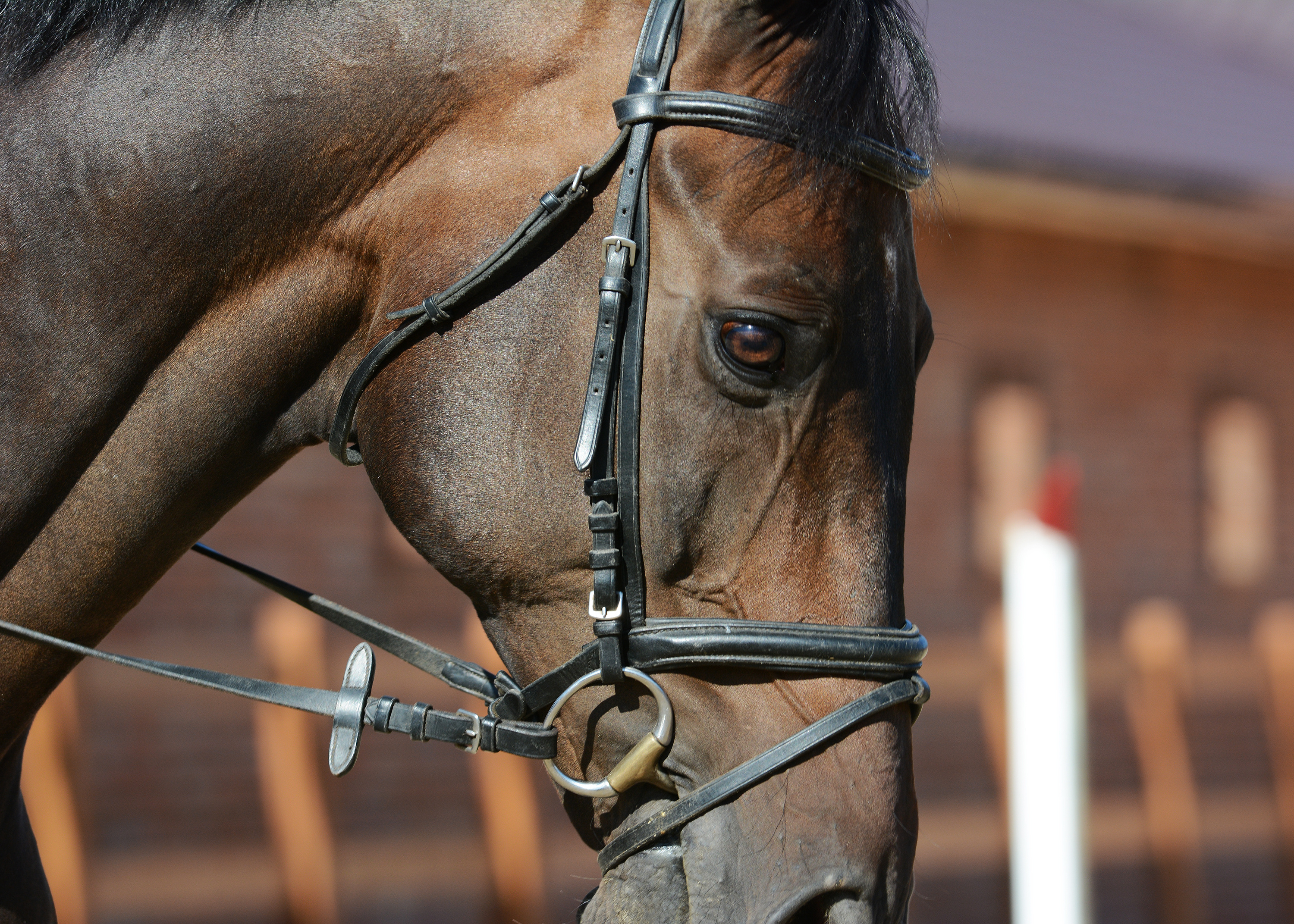Home > Horse World > What your horse wants you to know about nosebands
What your horse wants you to know about nosebands
- February 12, 2024
- ⎯ Mick McCluskey, BVSc, MACVSc
A noseband tight enough to immobilize a horse’s jaw can cause measurable stress, according to new research from Australia.
Researchers at Kandoo Equine in New South Wales and the University of Sydney measured stress responses in 12 horses wearing double bridles with “crank” nosebands, which have a leveraged buckle that allows a very tight fit and are typically used to keep a horse’s mouth closed. None of the study horses had worn this type of bridle and noseband before, a choice made by researchers to minimize any possible effects of habituation.

Over a four-day period, each horse was bridled daily for 30-minute periods with the noseband tightened to one of four levels for 10 minute treatments:
• unfastened (UN) • conventional area under noseband (CAUN), meaning two fingers would fit between the lower strap and the jaw • half conventional area under noseband (HCAUN) • no area under noseband (NAUN).
Prior to each treatment, the horses were placed in a test area and their behavior was filmed for 10 minutes. At the same time, baseline physiological data were collected—the horses’ heart rates were recorded and their eye temperatures were measured via a thermal camera every minute. “The eye is the often called the window to the brain,” explains Kate Fenner, BSc, who worked with behaviorist Paul McGreevy, PhD, MRCVS, on the study. “Activation of the nervous tissues, including the brain, is associated with increased blood supply, and so, in essence, the eye gives off heat when the nervous system is challenged.”
After each trial, the bridles were removed, and filming continued as measurements were taken.
Analysis of the data showed that heart rates and eye temperatures increased during the NAUN trials, when the nosebands were the tightest. These findings, Fenner says, indicate that the horses were stressed while wearing the tightened nosebands.
Analysis of the videos showed similar trends. Horses licked and swallowed significantly less during the HCAUN and NAUN trials and performed these behaviors, which are associated with relaxation, more frequently after the nosebands were removed.
Click here to learn what behavior may indicate lameness in horses.
In addition, the horses undergoing the two tightest noseband treatments chewed significantly less during the treatment period and significantly more during the recovery period. Fenner says that this indicates that there is a “post-inhibitory rebound effect,” during which horses attempt to lower their stress by indulging in behaviors that were prevented by the crank noseband.
“The deprivation of these behaviors is especially important to the horses as illustrated by accompanying stress response,” says Fenner. “The combination of this accompanying stress response and the rapid boom in the rate of these behaviors after the 10 minutes of deprivation (the so-called post-inhibitory rebound) are especially important to animal welfare scientists. The stress response is clearly linked to the inhibition of these oral behaviors, but we cannot unpick whether it comes from the pressure [of the noseband] or the deprivation or both.”
These findings, says Fenner, raise questions about a practice commonly seen at horse shows. “On ethical grounds,” the paper concludes, “the use of relentless pressure to eliminate oral behaviors in pursuit of a competitive advantage may be difficult to justify.”
This article first appeared in EQUUS issue #468
Don’t miss out! With the free weekly EQUUS newsletter, you’ll get the latest horse health information delivered right to your in basket! If you’re not already receiving the EQUUS newsletter, click here to sign up. It’s *free*!





